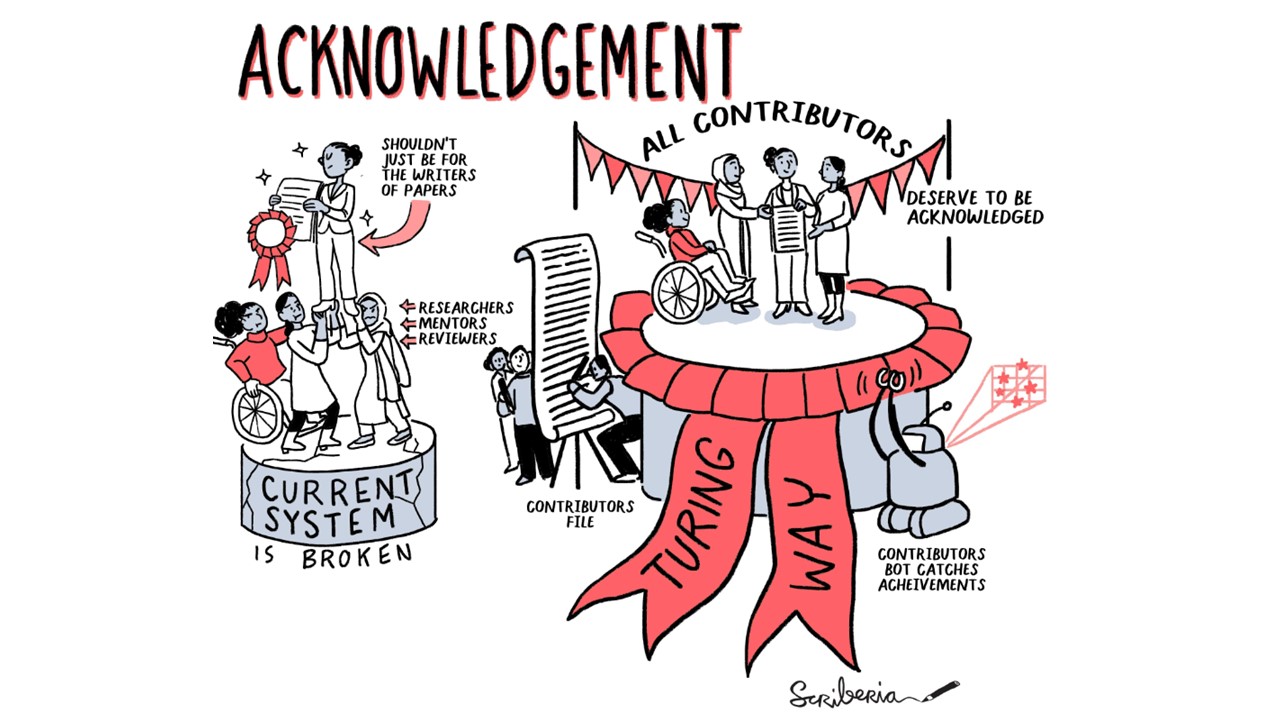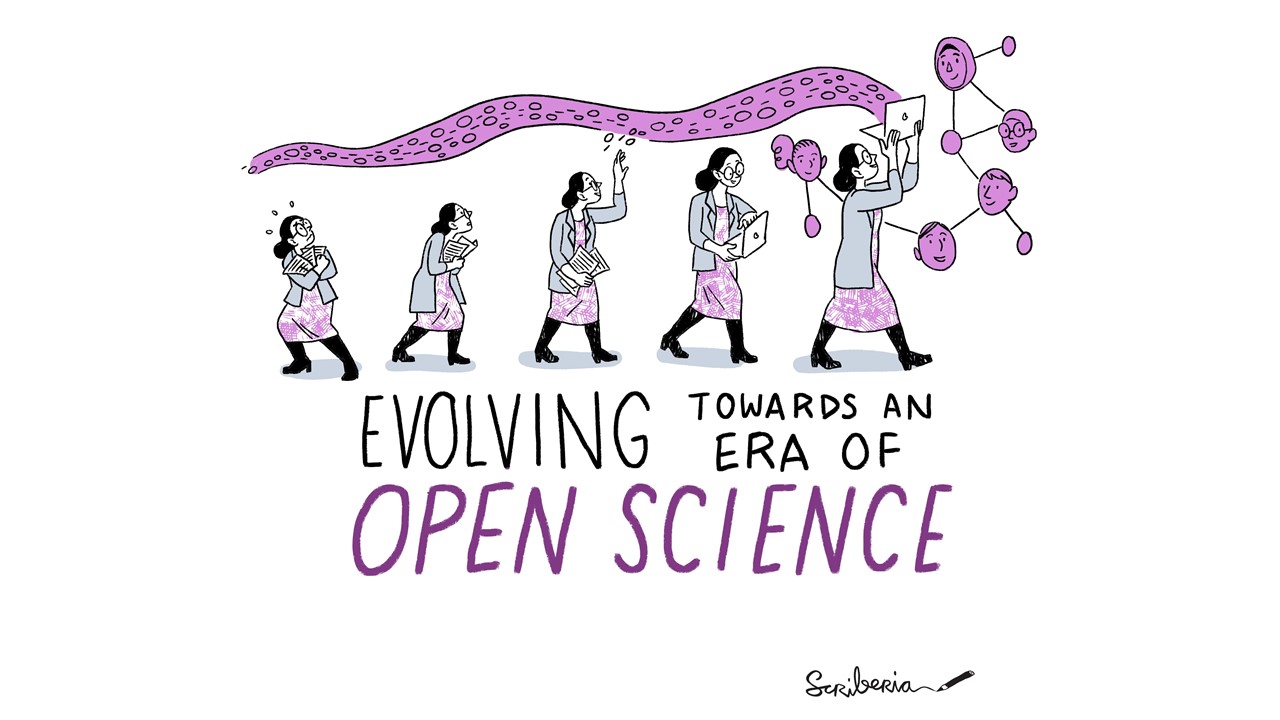Collaborative work in a pandemic - The Turing Way Bookdash November 2020
When I signed up to take part in The Turing Way bookdash, I was not sure exactly what I was in for. I have been engaging with other open science organisations for a while, and since the start of the COVID-19 pandemic, I have attended several online conferences, workshops and training. But this was really my first experience of truly collaborative working in the new age of online working.
If you are not sure what The Turing way is, it is an open source community-driven guide to reproducible, ethical, inclusive and collaborative data science. The goal is to provide all the information that data scientists in all fields need at the start of their projects to ensure reproducibility and reusability. The book started as a guide for reproducibility, but has now expanded, and is still expanding, to also include project design, communication, collaboration, and ethical research to enable data science research “open for all”.
The bookdash is an event that has been run by The Turing Way before but as an in person event. This was the first time it was to be online and the concept of fully online academic working is now becoming a necessity of our current pandemic situation. But this approach is also well aligned with the open science movement, in which doing research should be made accessible and inclusive to all. Many researchers are prevented from attending in person events for different reasons such as money, caring responsibilities, illness, and also having no time in the schedule for travel, to name just a few.
I have greatly benefited from the change to online research activities - I am the main carer of my two children and so could not really travel to attend most academic events in the pre-covid times when there were several national and international conferences to attend most years. This coupled with the cost involved in attending conferences has been rather off putting for me to work in academia while being a parent. I’m sure I am not the only one that has missed out on giving a conference paper due to a lack of inclusivity offered by the organisers. So, I was keen to see, during the bookdash, how effective it was to work completely through online video conferencing (in this case Zoom) and using collaborative communication and working tools such as Github, HackMD, and Slack.
The Turing Way community is designed so that anyone can contribute to the book. This was evident from the variety of planned work that was discussed on the first day of the bookdash. This ranged from reviewing previous work, writing new content on ethics, leadership and collaboration, translating existing content into other languages and improving accessibility of the book for contributors and users.

There was also an emphasis on enabling new contributors. This started before the week of the bookdash, when we attended a pre-bookdash event call. It was stressed by the Community Manager, Malvika Sharan, and the Project Lead, Kirstie Whitaker, that we must try to make use of the funding available to use for childcare or accessibility equipment that might help us take part in the event. We had the opportunity to talk about what we had proposed to do during the week and also to get technical help for the tools we would be using. For most people, using Github was a new experience. It is a widely used platform by computer scientists but much less used by the wider research community. It has a number of great features for collaborative projects, including the ability to version control and communicate on collaborative documents.
I had proposed to write a piece for the book to enable new Github users to get started. This is a tool I have wrangled with myself this year as working in open science does require new skills. I am not much of a computer coder and at first Github seemed very foreign to me. However, I found with just a small amount of training I could accomplish a lot and I wanted to make this new found skill of mine more accessible for other researchers. I think it is a tool that has many benefits for researchers in this time of online working, particularly building and enabling projects with distributed teams.
Once the bookdash started, we were formed into a number of teams dependent on the aspect of the book we would be working on. I was put into the accessibility group and also sometimes the individual project group. This meant we got to meet and work with a number of different people. There were three zoom sessions per day; each lasting two and half hours and spread throughout the day to allow for the different time zones of the participants. This gave a great deal of flexibility and we were encouraged to take regular breaks to prevent Zoom overload!
I found this set up enabled me to move forward quickly with the content writing that I had planned. I worked mostly with Paul Owoicho, who was working on improving the accessibility of the book through developing templates for contributors but also by creating ways to make the book more accessible for users such as providing alt text for images. He was a great work partner for me as he has all the computer skills that I don’t possess!
Each session was divided up into pomodoros. These are short working sessions of about 25 minutes followed by quick report-outs. We generally had a bit of a catch up chat at the beginning of each session, then chatted about the work we were doing and got any help from each other that was needed. After that we worked quietly during the rest of the session. If we needed help from anyone else we could jump over to another breakout room or into the main room to speak to Malvika or Kirstie.
One of the highlights of my week was working with an illustrator, Jem Milton, from Scriberia. We were all able to spend time developing an idea for an illustration to be used in The Turing Way or more widely in the community. As my work for the week was based on accessibility, and I generally feel that science is in a period of change to more open ways of working, I suggested an image based on the classic human evolution diagram showing how science is evolving. This also links well with me being an archaeologist so I am hoping it will capture the imagination of colleagues when I give talks about open science. You can see the image below.

Another feature of the week was a real effort to bring all the new contributors into the community and this was done through coffee chats, a family lunch and a final report out to celebrate all the hard work by each participant. This meant that we could all get to know each other informally and it was very successful at building a sense of community within a diverse group of researchers.
So, was the collaborative working during The Turing Way bookdash a success? For me, I found collaborative working really enjoyable. Meeting and working with a group of researchers from around the World, and with such different backgrounds, was an amazing experience and one I would like to continue doing. In terms of how much I got done, I achieved my objective of writing a new chapter that will appear in the book shortly, but I also managed to work on updating the glossary and reviewing other people’s work. I would say that it was a very productive week, and not just for me, as a large amount of work was achieved by all the participants.
I also think it was a very good outcome in terms of community building. The friendly and informal approach taken to nurture new contributors really did lower any perceived barriers to working on the book. The new skills needed to contribute were achieved by all and I think the bookdash was able to grow The Turing Way community successfully.
If you are interested in reproducible research, then please check out The Turing Way!
All images used in this post were created by Scriberia for The Turing Way community and are used under a CC-BY licence.
You can cite this blog by using this citation:
Emma Karoune, Esther Plomp, & Jennifer Bates. (2021, July 2). EKaroune/The-Open-Archaeobotanist: The Open Archaeobotanist blog October 2020 to July 2021 (Version v1.0). Zenodo. http://doi.org/10.5281/zenodo.5062417